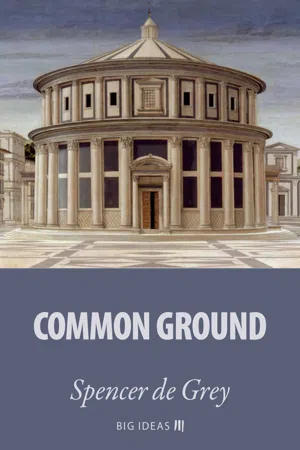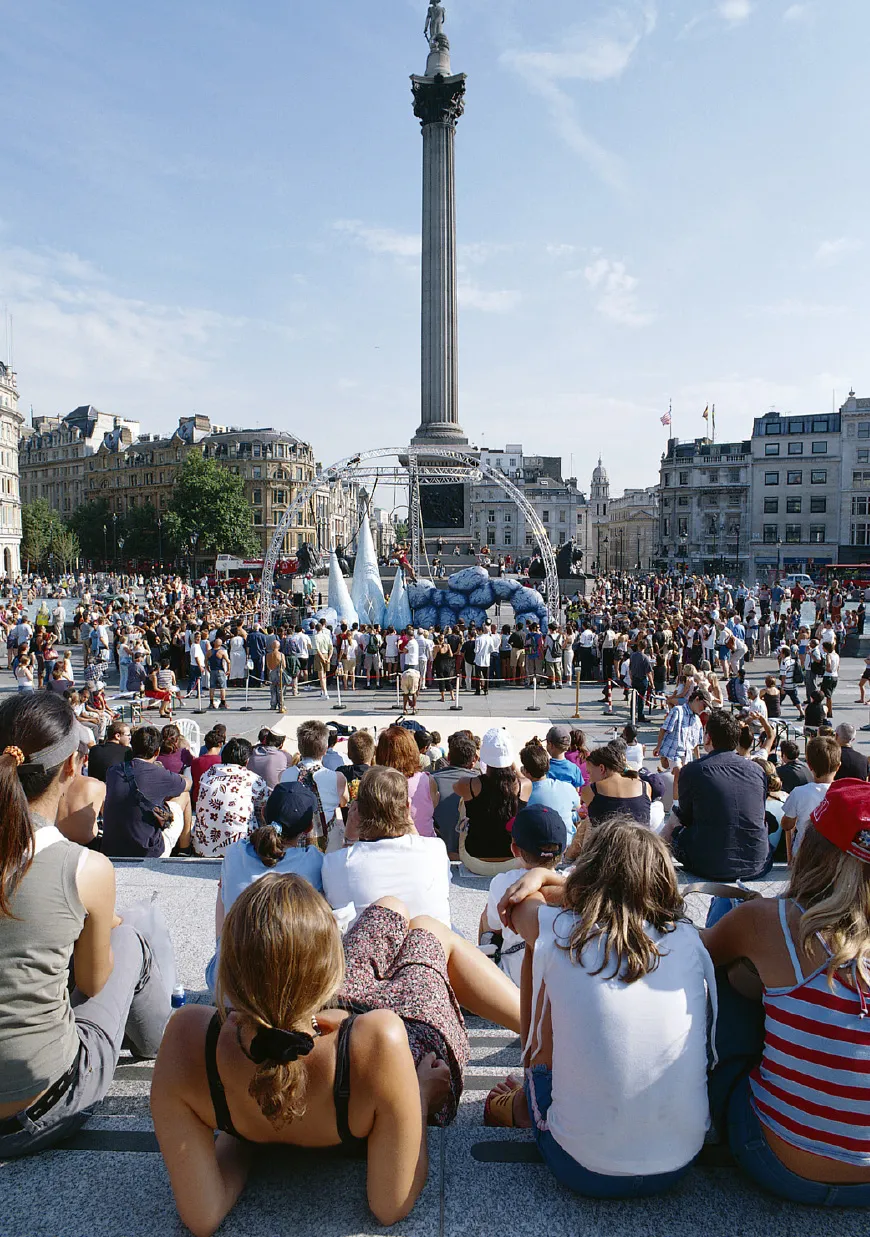
- 36 pages
- English
- ePUB (mobile friendly)
- Available on iOS & Android
Common Ground
About this book
By 2050, three-quarters of the world's 9.6-billion-strong population will be living in cities – inhabiting vibrant historic cores, commuting from new hinterlands via high-speed transit, or occupying informal urban settlements.Some cities will flourish while others will struggle to meet the demands of a growing population and a changing environment. It will take the collaborative expertise of various disciplines, gathered under the umbrella of good governance, to ensure our cities thrive in the future. Spencer de Grey, Head of Design at Foster + Partners, explores the role that architecture and urban design can play in this global endeavour.This is the tenth essay in the Big Ideas series created by the European Investment Bank.The EIB has invited international thought leaders to write about the most important issues of the day. These essays are a reminder that we need new thinking to protect the environment, promote equality and improve people's lives around the globe.
Frequently asked questions
- Essential is ideal for learners and professionals who enjoy exploring a wide range of subjects. Access the Essential Library with 800,000+ trusted titles and best-sellers across business, personal growth, and the humanities. Includes unlimited reading time and Standard Read Aloud voice.
- Complete: Perfect for advanced learners and researchers needing full, unrestricted access. Unlock 1.4M+ books across hundreds of subjects, including academic and specialized titles. The Complete Plan also includes advanced features like Premium Read Aloud and Research Assistant.
Please note we cannot support devices running on iOS 13 and Android 7 or earlier. Learn more about using the app.
Information
PUBLIC REALM AND PUBLIC LIFE

Table of contents
- Cover
- Big ideas
- Common ground
- Public realm and public life
- Cities are a chequerboard
- Inclusivity and democracy
- Sustainable design
- Green and blue infrastructure
- Biography
- Notes